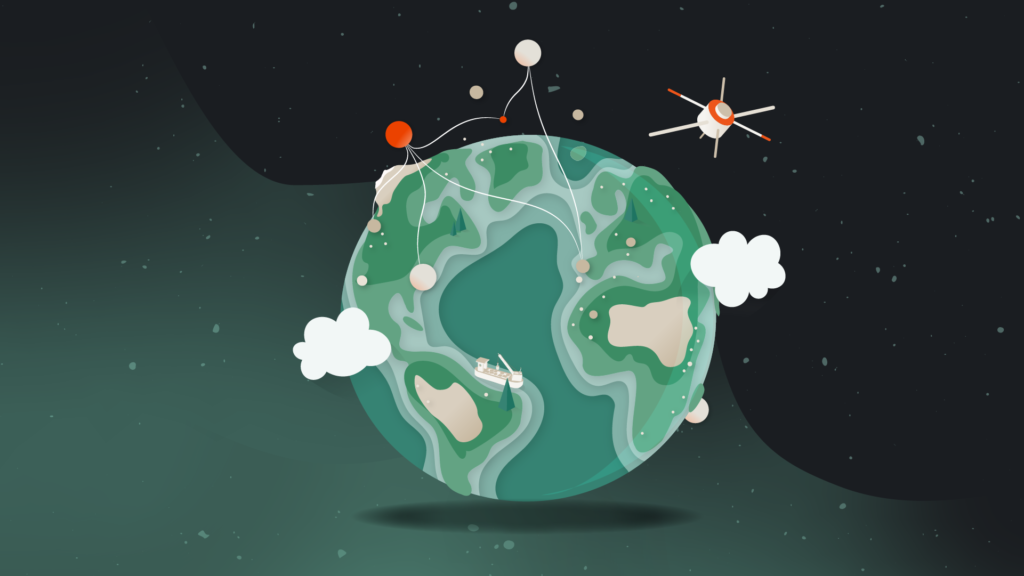In 2020, the European Commission released a “Circular Economy Action Plan — for a cleaner and more competitive Europe”. Here’s what U.S. organizations should draw from it.

In 2015, the European Commission adopted a Circular Economy Action Plan that outlines specific measures to help European nations transition to a circular economy, promote collaboration, and generate sustainable growth in the EU economic sphere. Since then, the Action Plan has been updated with current measures to encourage sustainable production and supply chain practices, and address issues in resource-intensive sectors with high circularity potentials such as: electronics, batteries and vehicles, packaging, plastics, textiles, construction, and food production. Most importantly, the Action Plan highlights the EU’s unwavering commitment to supporting its member nations’ transition from linear to circular economies, and demonstrates its sustainability leadership in the global arena.
With our focus on scaling the circular economy, Rheaply is glad to see global leaders take concrete and measurable action on this front. Changing and redefining governmental and business practices can be extremely challenging; the transition to a global circular economy therefore requires collective effort from regional, national, local, and individual levels.
9 Takeaways from the EU report
To save you time from reading the 26-page report, we’re providing you a birds-eye view of the plan by highlighting our 9 main takeaways with direct quotes. All of the following messages are relevant and can be applied to the US and other global economic regions:
- Circular economy principles promote positive economic benefits. “Applying circular economy principles across the EU economy has the potential to increase EU GDP by an additional 0.5% by 2030 creating around 700 000 new jobs.There is a clear business case for individual companies too: since manufacturing firms in the EU spend on average about 40% on materials, closed loop models can increase their profitability, while sheltering them from resource price fluctuations.”
- Digital innovation and collaboration will drive a circular, sharing economy. “Innovative models based on acloser relationship with customers, mass customisation, the sharing and collaborative economy, and powered by digital technologies, such as the internet of things, big data, blockchain and artificial intelligence, will not only accelerate circularity but also the dematerialisation of our economy and make Europe less dependent on primary materials.”
- Transition to circular models is essential to achieving climate-neutrality and material savings. “Circularity is an essential part of a wider transformation of industry towards climate-neutrality and long term competitiveness. It can deliver substantial material savings throughout value chains and production processes, generate extra value and unlock economic opportunities.”
- Plastic production, recycling and waste reduction measures must be effectively monitored. “To increase uptake of recycled plastics and contribute to the more sustainable use of plastics, the Commission will propose mandatory requirements for recycled content and waste reduction measures for key products such as packaging, construction materials and vehicles, also taking into account the activities of the Circular Plastics Alliance.”
- Economic growth must be decoupled from increased waste generation. “Despite efforts at EU and national level, the amount of waste generated is not going down. Annual waste generation from all economic activities in the EU amounts to 2.5 billion tonnes, or 5 tonnes per capita a year, and each citizen produces on average nearly half a tonne of municipal waste. The decoupling of waste generation from economic growth will require considerable effort across the whole value chain and in every home.”
- Sustainable waste management practices begin with the producer. “The [European]Commission will also enhance the implementation of the recently adopted requirements for extended producer responsibility schemes, provide incentives and encourage sharing of information and good practices in waste recycling. All this shall serve the objective to significantly reduce total waste generation and halve the amount of residual (non-recycled) municipal waste by 2030.”
- Exporting domestic waste is unsustainable and illegal— countries must efficiently handle internal waste management. “In the past decade, millions of tonnes of European waste has been exported to non-EU countries, often without sufficient consideration of proper waste treatment. In many cases, waste exports result both in negative environmental and health impacts in the countries of destination, and in loss of resources and economic opportunities for the recycling industry in the EU. The [European] Commission will take action with the aim to ensure that the EU does not export its waste challenges to third world countries.”
- Research, innovation, and digitalization can lead the transition to a circular economy. “Digital technologies can track the journeys of products, components and materials and make the resulting data securely accessible. The European Institute of Innovation and Technology will coordinate innovation initiatives on circular economy in collaboration with universities, research organisations, industry and SME’s within the Knowledge and Innovation Communities.”
- The transition to a fully circular economy is a global effort. “Europe will not achieve transformative change by acting alone. The transition to the circular economy will be systemic, deep and transformative, in the EU and beyond. It will be disruptive at times, so it has to be fair. It will require an alignment and cooperation of all stakeholders at all levels — EU, national, regional and local, and international.”

Rheaply is scaling the circular economy with digital technology
At Rheaply, in line with the measures highlighted in the EU Circular Economy Action Plan, we believe in the potential of technology to scale the circular economy.
Rheaply’s resource exchange is driving visibility and utilization of surplus assets and resources on a modernized platform, increasing reuse remanufacturing of resources across business operations.
By scaling globally, Rheaply can serve as a pillar of any zero waste and circular economy strategy, increase the efficiency of operational budgets of any organization, and connect communities to the world of underutilized, shareable or unwanted assets.
Join us in our effort to make sure important resources find a new home again